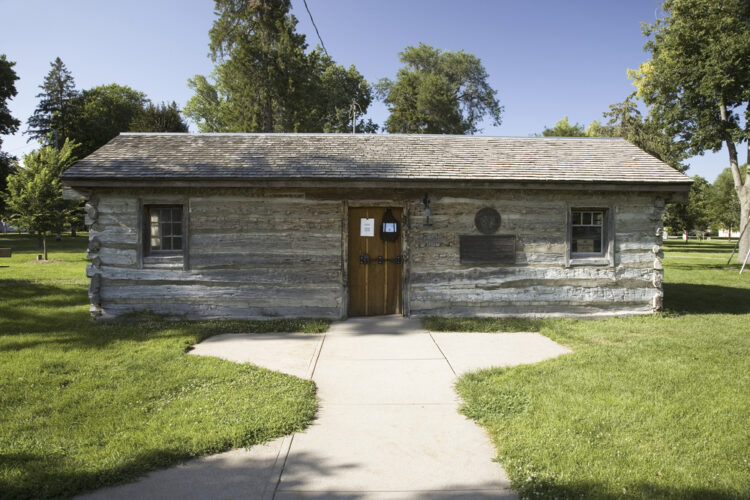The two biggest cities in Nebraska (by far), Omaha and Lincoln, hug the eastern border. And as the land rolls out toward the West into the Nebraska Panhandle, the landscapes, history, lifestyles, and stories change dramatically. The Nebraska Panhandle houses some of America’s most historic – or unusual – spots.
The town of Ogallala, named for the Native-American tribe that’s been on these lands for centuries, has a population of about 5,000. And Ogallala has some incredible tales to tell. Once a little-known stop on the Union Pacific Railroad, it grew into a booming town along what was known as the Texas Trail, as wagon trains passed through it en route to Texas. Its population never grew past 25 souls. But on many nights, there were more than a hundred outsiders in the town, from gold prospectors and gunslingers and buffalo hunters to “ladies of the evening.” And plenty of gunfights and gambling brawls to accompany them.
Then the Union Pacific Railroad came through, upping the visitor count and the wild incidents.
Then the cattle drives came through, some with more than 75,000 head of cattle…and a lot of hard-drinking cowboys. And the boisterous, often-drunk newcomers had more than a few shootouts with the local folks and the Ogallala tribe.
Not surprisingly, the murder rate soared. In fact, one Ogallala tribal guide told me that, one year in the late-1800’s, the town had only 17 residents. But in the “Boot Hill” cemetery – one of whose inhabitants is “Rattlesnake Ed” – he showed me 17 graves from that year! Which meant, basically, that those 17 folks in the town just killed each other off!
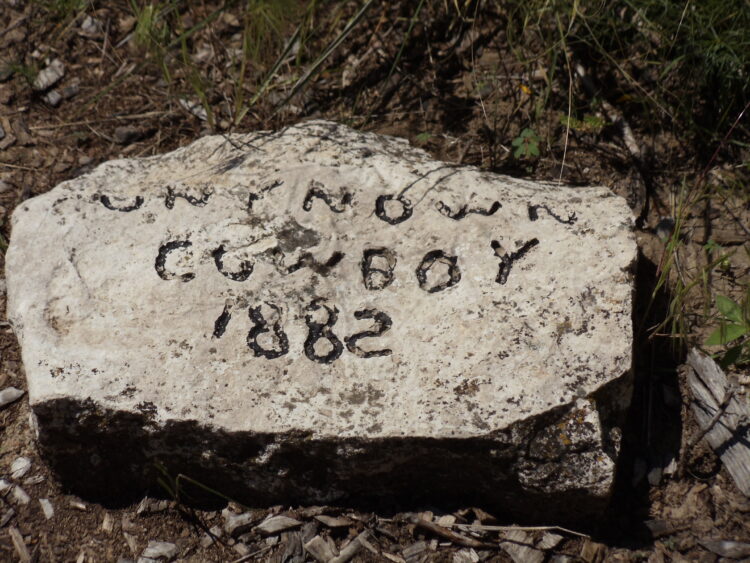
About a half-hour’s drive from Ogallala, in the town of Lewellen, is the appropriately-named “The Most Unlikely Place,” where you’ll find good eatin’, good arts and crafts, and good gifts.
Fort Robinson State Park, in Crawford, Nebraska, boasts a colorful past as an Army base in the late-1800’s. Here are some 22,000 acres of striking Pine Ridge scenery, along with recreation, dining, lodging in 150-year-old barracks and officers’ quarters, a museum, a buffalo herd, camping, fishing and horseback riding.
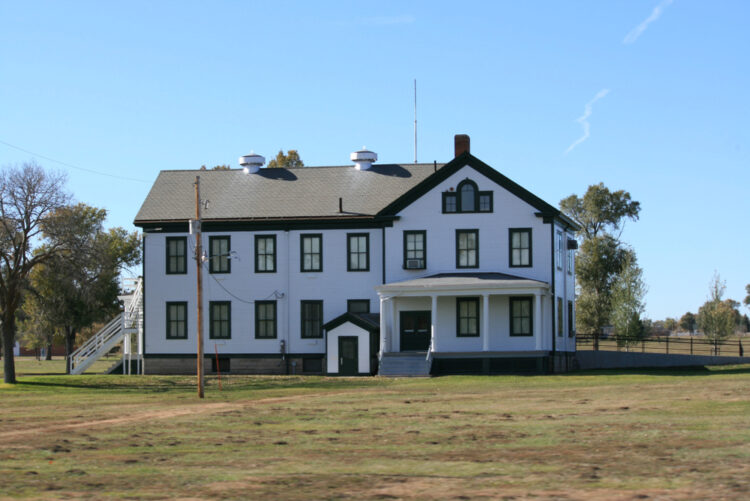
A nearby town called Chadron offers attractions such as the Mari Sandoz High Plains Heritage Center and the Museum of the Fur Trade, each of which tell fascinating stories about the Panhandle.
You can’t visit the Panhandle, however, without tracing at least a part of the Oregon Trial.
At Chimney Rock National Historic Site, near the town of Bayard, you can still see the wagon-wheel ruts of the early pioneers on the Oregon Trail. This is also where you’ll find one of America’s most striking natural wonders. Chimney Rock stands 4,228 feet above sea level, an amazing site amidst the rolling green hills and plains surrounding it. The summit rises 470 feet above the North Platte River and measures 325 feet tip to base, topped by a stunning thin spire of rock shooting straight up 120 feet into the sky. There’s also a campsite here, and a museum detailing the halcyon days of the Oregon Trail.
Between 300,000 and 400,000 Easterners looking for a new life out West traversed the Oregon Trail in covered wagons from 1840 to 1860. Sadly, however, thousands of them never reached Oregon, succumbing to the harsh winter weather, diseases, the lack of food, the breakdowns of their wagons, and attacks from local bandits or from Native-Americans who feared the influx of newcomers.
That’s why you can still see primitive graves with very short, hand-carved inscriptions on weather-beaten wooden markers along the Trail. With scribbled epitaphs such as “K.R. Jones 1840” or “Rachel E. Pattison, Aged 18, June 19, 1849,” or simply “Unknown.”
“Between the Native-American attacks on these strangers crossing their lands, the bandits and robbers, the freezing winters and the steaming summers, and the shortages of food and water, our ancestors buried many of their children and grandchildren on the Trail,” a young Nebraska man once told me. “And often, their spouses. This happened so often that some of those folks decided to just stop here and put down roots. And at least two of them were my ancestors!”
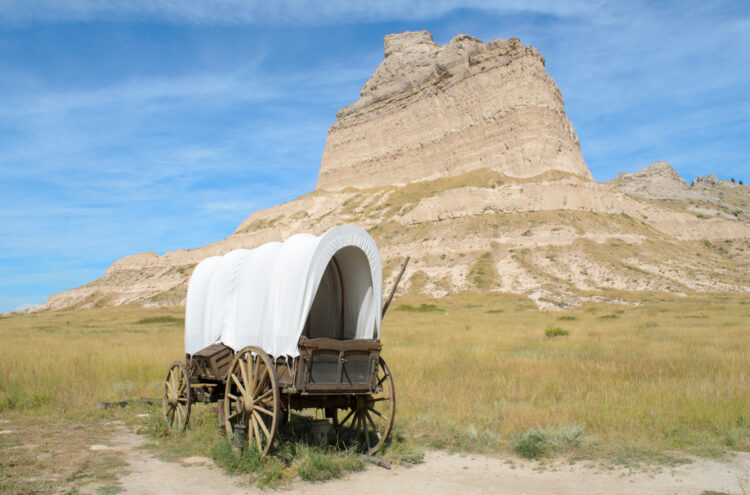
About 23 miles from Chimney Rock is the town of Scotts Bluff, site of the Scotts Bluff National Monument. Towering 800 feet above the North Platte River, this immense stone mountain can be seen for miles around. This region is Cowboy Country, and you’ll see a lot of them at the annual summer re-creation of the Pony Express riders coming through here on their way West or East. There are nearly four miles of hiking trails on Scotts Bluff, along with a 1.6-mile drive that will take you through some tunnels to the top.
The views from the top are spectacular…a colorful panorama of plains, hills, and rocky promontories that seems to go on forever. And the views at the bottom are moving, as well…you’ll see a lot of wagon ruts still lining the Oregon Trail.
The Agate Fossil Beds National Monument, in the town of Harrison, offers a glimpse of how the original Native-American residents of this region lived. And the Legacy of the Plains Museum offers a touching look at how the region’s “wagon-train” settlers and native inhabitants lived and worked the land and celebrated their joys and buried their loved ones. This museum also features antique artifacts, old tractors and farming tools, historic farm buildings and an 80-acre working farm, along with stunning views of Scotts Bluff National Monument.
Near the town of Gering is the 1,100 acres of the Wildcat Hills State Recreation Area and Nature Center. You’ll look out over stunning panoramas of flatlands and hills with old farms spread out across them, and huge rock formations and outcroppings. The facility also boasts canyons, shooting sports, overnight camping sites, and nature trails with views of the North Platte River.
What’s the most unusual site you’ll see in the Nebraska Panhandle? That’s easy… CARHENGE!
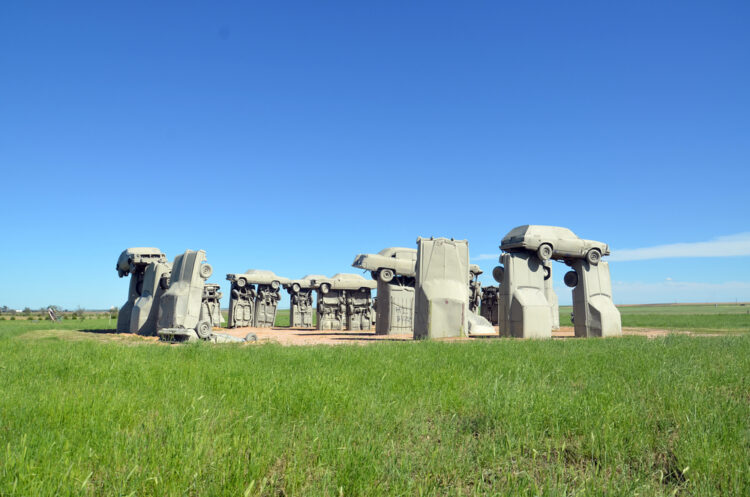
The idea for Carhenge was hatched by a man named Jim Reinders, whose Dad had lived in England and had explored the ancient statues of Stonehenge. In 1982, Jim’s Dad passed away. And five years later he and all his relatives gathered to design a memorial to his Dad.
Now, located near the town of Alliance, is definitely the coolest collection of cars on Earth. These cars, however, aren’t for sale. And it’s been many years since they were driven. They’re extremely funky, and fused together in groups that might be stacked sideways, or on top of each other, or leaning against each other at impossible angles, in colors ranging from psychedelic to industrial-gray. It’s the most unusual balancing act you’ll ever see. Right in the middle of the prairie.
As you drive into Carhenge, you probably won’t believe what you’re seeing…it appears to be a striking industrial-chic mirage. The first 39 automobiles were placed in a circular fashion with a 96-foot diameter, as is Stonehenge. Additional autos have been added with the passing years, with all types of cars and all types of colors and all types of stacking, leaning, piling, etc.
It’s a sight you won’t forget…ever. And the same is true of the whole Nebraska Panhandle.
About the Author: Steve Winston
I’ve written/contributed to 17 published books. And my articles have appeared in major media all over the world, among them The New York Times, “Business Week,” “Travel & Leisure,” “Men’s Health,” CNN, “Forbes,” The Jerusalem Post, The Irish Times, The Boston Globe, The
San Francisco Chronicle, The Toronto Star, “Western Art & Architecture,” and The Associated Press. In pursuit of “The Story,” I’ve been a war correspondent in a combat zone; been a cowboy in Arizona; jumped into an alligator pit; trained with a rebel militia in the jungle; climbed 15,000-foot mountains; rafted Class V rapids; flown World War II fighter planes in aerial “combat”; went on an expedition into the Arctic Circle; explored ice caves at 10,000-feet in Switzerland; encountered a bear on a black night in the Rocky Mountains; been invited to dinner by a President; and been tossed out of a London reception given by Queen Elizabeth. My website is https://stevewinston.com/


